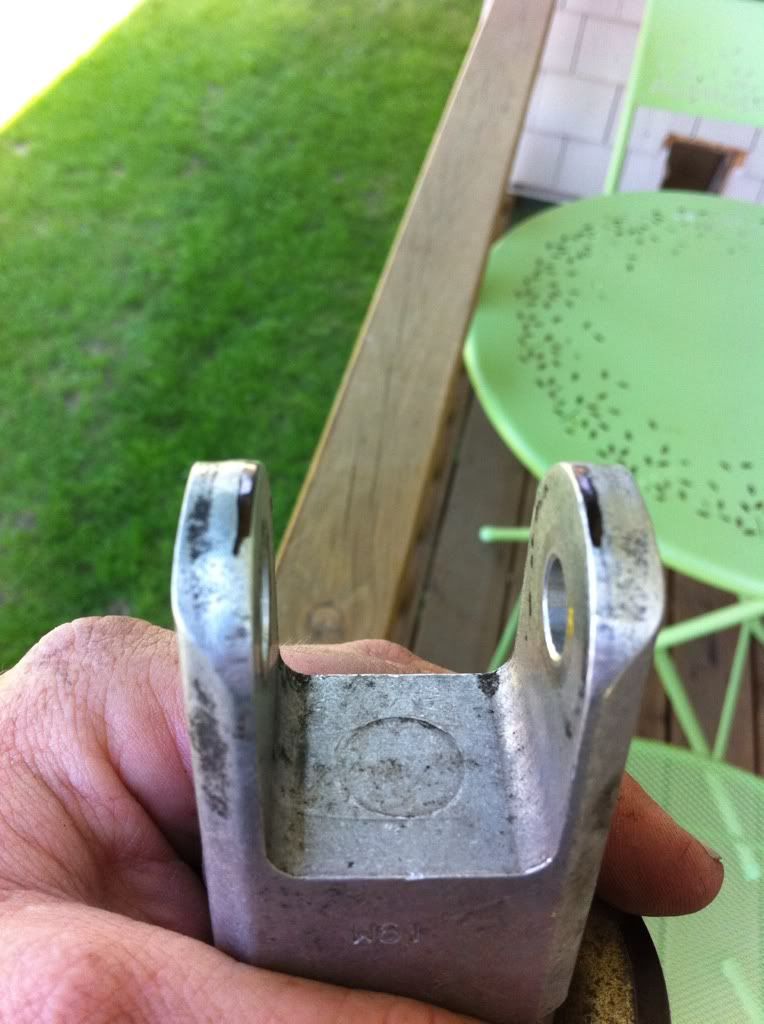
Announcement
Collapse
No announcement yet.
Before I destroy something good I better ask......
Collapse
X
-
Before I destroy something good I better ask......
I've acquired a hayabusa shock that is in much better shape than my original. I've measured for length, and the only issue is fitting the clevis around the pivot arm on top. I marked with a sharpie how I need to remove but I don't want to compromise its strength. My gut says go for it but I figured I would defer those who are wiser before I start grinding
 Tags: None
Tags: None
-
 7981GS
7981GS -
That wont hurt anything..the main stress is gonna be at the bottomm where the stud has to hold agaisnt the compressions..grind away.MY BIKES..1977 GS 750 B, 1978 GS 1000 C (X2)
1978 GS 1000 E, 1979 GS 1000 S, 1973 Yamaha TX 750, 1977 Kawasaki KZ 650B1, 1975 Honda GL1000 Goldwing, 1983 CB 650SC Nighthawk, 1972 Honda CB 350K4, 74 Honda CB550
NEVER SNEAK UP ON A SLEEPING DOG..NOT EVEN YOUR OWN.
I would rather trust my bike to a "QUACK" that KNOWS how to fix it rather than a book worm that THINKS HE KNOWS how to fix it.
Comment
-
 cableguy
cableguy -
One thing that has not been mentioned is to make sure you do not create a stress riser by filing in a sharp edge. Make sure that all corners are rounded as these are much less likely to break.
As a guide, look at the existing inside radius of how the left and right clevises join into the main body of the lower shock.
Comment
-
 cableguy
cableguy
I didnt know a stress riser was until I consulted my friend wiki, but what I think you're saying is not to change the thickness down at the bottom of the clevis, and try to match the contour of the pivot arm that the clevis will be fitting over, so as not to create focused stress points. Is that more or less correct?
Comment
-
 Dreef1999
Dreef1999
I think you got it. When transferring force through a material it kind of 'flows' and if you grind one location and create a sharp angle the the force could concentrate at that sharp angle and cause a crack to form. That crack will start tiny but will slowly migrate through the entire piece until it fractures.
to avoid that problem make sure you don't grind into a sharp angle. Make sure to radius the change of thickness.
the famous example is the comet airliner that blew up because the windows were too square instead of oval or round.
Comment
-
as Dreef describes.......Originally posted by cableguy View PostI didnt know a stress riser was until I consulted my friend wiki, but what I think you're saying is not to change the thickness down at the bottom of the clevis, and try to match the contour of the pivot arm that the clevis will be fitting over, so as not to create focused stress points. Is that more or less correct?
hopefully the attached picture is also clear.
if you visualize the stresses in the concrete, you can better understand what a stress riser is. When external loads are distributed more uniformly then the internal stress of the material "does not " concentrate at a point . In the case of a sharp corner, the stresses in the material to either side of the corner are not stresses to much because the loads are more uniformly distributed. However, at the corner suddenly the same load create much more material stress at that point.
Last edited by posplayr; 05-20-2012, 06:15 PM.
Comment
.png)


Comment